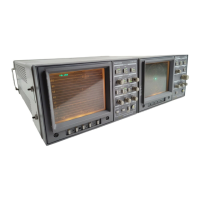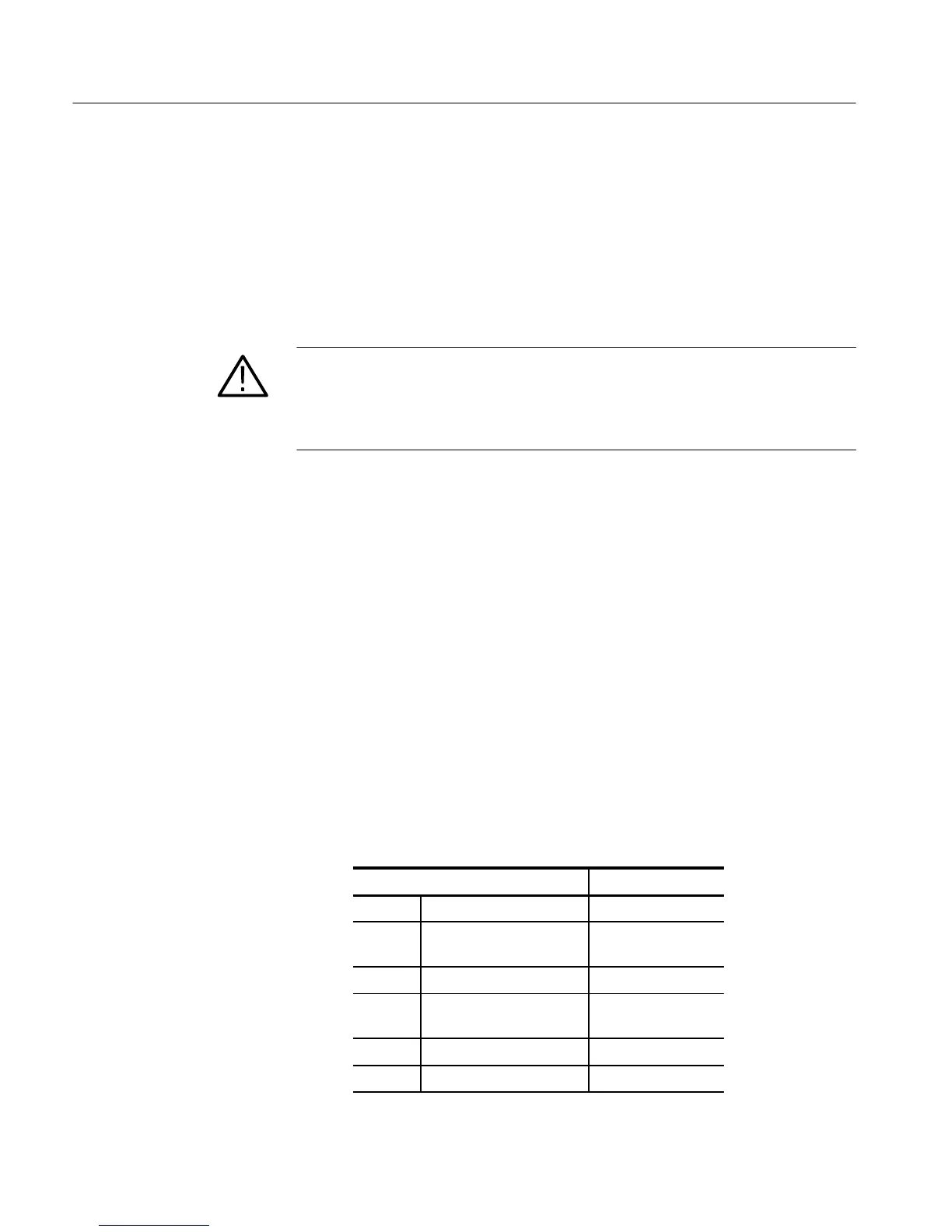1730–Series Maintenance
6–2
(high–velocity air can damage some parts). Hardened dirt or grease may be
removed with a cotton–tipped applicator dampened with a solution of mild
detergent and water. Abrasive cleaners should not be used. If the circuit board
assemblies must be removed for cleaning, follow the instructions for removal/re-
placement under the heading of Corrective Maintenance.
After cleaning, allow the interior to thoroughly dry before applying power to the
instrument.
CAUTION. Cleaning fluids:
After cleaning, carefully check the instrument for defective connections,
damaged parts, and improperly seated transistors or integrated circuits. The
remedy for most visible defects is obvious; however, if heat–damaged parts are
discovered, determine the cause of overheating before replacing the damaged
part, to prevent additional damage.
Periodic checks of the transistors and integrated circuits are not recommended.
The best measure of performance is the actual operation of the component in the
circuit.
This instrument contains electrical components that are susceptible to damage
from static discharge. Static voltages 1 kV to 30 kV are common in unprotected
environments. Table 6–1 shows the relative static discharge susceptibility of
various semiconductor classes.
Table 6–1: Static Susceptibility
Relative Susceptibility Levels Voltage
2 ECL 200V – 500V
SCHOTTKY SIGNAL
DIODES
SCHOTTKY TTL
HF BIPOLAR TRAN-
SISTORS
JFETS
LINEAR mCIRCUITS
Visual Inspection
Static–Sensitive
Components

